Re-energize your Brand with Immersive Customer Experiences
Re-energize your Brand with Immersive Customer Experiences
Datamatics has years of experience developing high-end Augmented Reality (AR) & Virtual Reality (VR) solutions. It helps businesses amplify their product/service value proposition through a highly adept team of AR & VR development consultants.
Our end-to-end Augmented Reality App Development services & Virtual Reality App Development solutions are geared towards creating a surreal yet immersive experience for customers while helping to differentiate the brand from the competition.
By partnering with Datamatics, you can unlock the full potential of AR and VR to transform your business.
Explore some recent Augmented Reality & Virtual Reality projects,
where virtual blends into the real.
Drive True Customer Satisfaction
with the Power of Immersive Buying
Explore 60+ augmented and virtual reality use cases across industries and leverage AR and VR consulting services to accelerate business outcomes.
Staff training, troubleshooting high-end machinery
Read more >>Conduct classroom lectures, organize campus tours, etc.
Read more >>Conduct virtual expos, provide indoor navigation, gamify visitor engagement, etc.
Read more >>Immersive showrooming, virtual prototyping, employee training, technical support services
Read more >>VR Property showcases, virtual bike tours, AR Driven Marketing, Interior Design, Architectural Visualization
Read more >>Advanced diagnostics and risk assessment, augmented surgery, medical training & simulation
Read more >>Organize virtual music shows and concerts, visualize sporting arenas, virtual ads, virtual gaming, etc.
Read more >>Product visualization, virtual try-out, virtual store experience, etc.
Read more >>Open VR | Google VR | EasyAR | zapworks | wikitude | unity | UNREAL Engine | ARCore | ARKit | Vuforia | 8th Wall | oculus
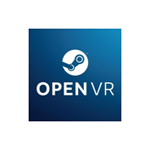
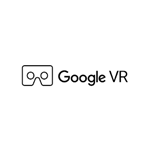
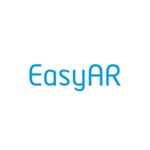




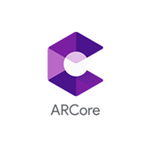
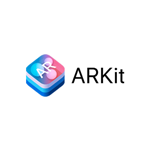


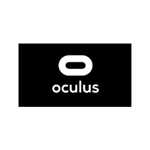
Delivering Surreal Experiences with Award-winning AR & VR Capabilities
Explore some of our recent Augmented Reality & Virtual Reality projects, where virtual blends into the real.
AR is achieved by overlaying a virtual image of the product or an entity through a mobile app on a preferable physical area or body, thereby getting customers a real-time trial of the product without having to buy it first. AR can empower businesses to offer their customers a real-time augmented demonstration of their product in its intended physical space. This can help them rationalise and authenticate their value propositions. AR services are drastically changing business landscapes offering customers an instant immersive experience on the look and feel of the product. This not only expedites buying but also strengthens customer loyalty to your brand.
VR is more like a virtual replica or a simulation of the real world with minimal elements of reality. Blurring the boundaries between real and virtual world, VR enables companies to better visualize, create, and analyze their products to avoid post-production complications. It also enables companies to conduct remote meetings, interviews and virtual product launches, through discreet virtual stores, helping them stay ahead of the competition. Empowering companies to virtually create almost any fictional or real space or entity for functional or demonstrative purposes, VR has helped companies transition into state-of-the-art, customer-driven and forward looking enterprises.
Augmented Reality as the name suggests augments the real-life spaces with virtual elements and markers through a mobile application. The AR in that regard is partially virtual and offers the viewer a picture of an environment that could have imminent existence with certain prospective elements or products. For example, an overlay of a furniture item in a digital marketplace website on the respective space to have an idea of its suitability. VR on the other hand offers viewers a completely virtual tour of an experience that may or may not be possible to physically develop at that instant. For instance, a virtual tour of a remote museum in a classroom is an example of Virtual Reality. Virtual Reality usually requires special equipment such as VR glasses or headsets, whereas AR just needs a dedicated mobile application.
For AR & VR development, you first need to decide on a game engine. There are two leading game engines developers prefer: Unreal and Unity. Both are capable, but usage depends on business and project requirements. Unity is based majorly on C# programming language suitable for desktop, mobile as well as AR & VR applications.
Unreal employs C++, that has lesser syntax consistency than C#. It is statically-typed, which means that code needs to be checked via Unity before starting, therefore mistakes are detected and corrected seamlessly, making C# much easier to operate.
AR & VR applications are deployed in numerous industries. In manufacturing, AR & VR can be used to troubleshoot high-end machinery, product designing, and prototyping, etc. In education, AR & VR can offer students factual information about a concept or theory just by a phone scan. VR can offer students virtual tours of historical sites, museums, zoos, botanical gardens, and more inside a classroom. It can also help science students perform certain training tasks such as surgeries, minor incisions, etc. In retail, the technologies offer retailers virtual product visualisations, creative ways of advertising, customer engagement programs such as the in-store hunt for AR markers to win discounts, offers, and other rewards. The inherent immersive character of the technology further makes it employable in industries like real estate, event management, automotive, etc. The use cases span from immersive hands-on training and site experiences to information retrieval through AR overlays.
Datamatics is a Digital Technologies, Operations, and Experiences company that enables enterprises to go Deep in Digital to boost their productivity, customer experience and competitive advantage.